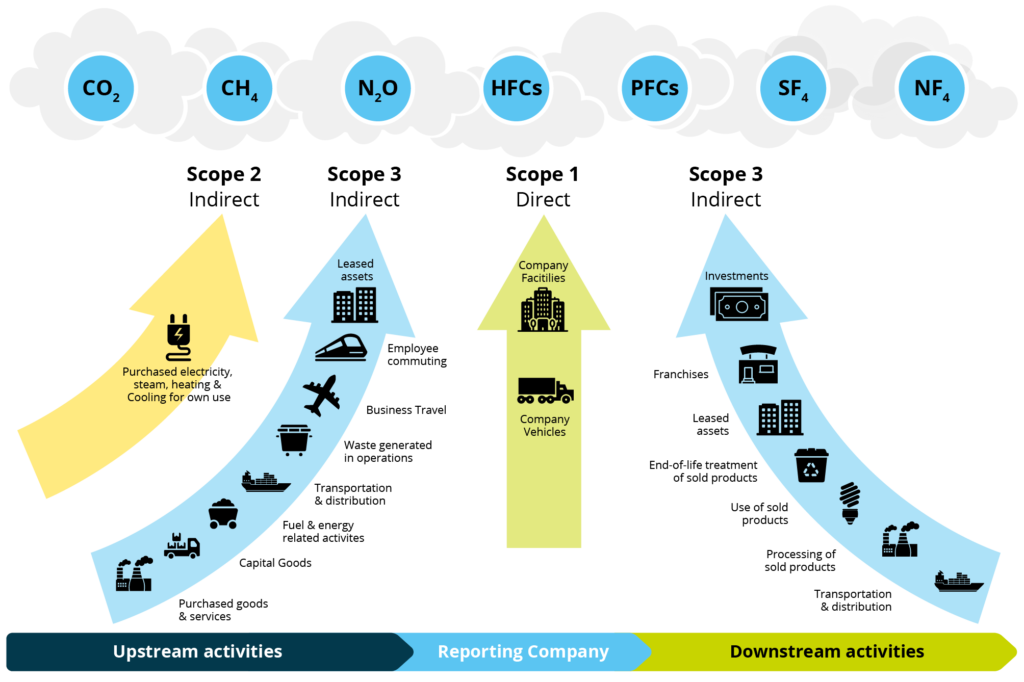Reducing carbon emissions is becoming a business imperative as organizations worldwide work to reduce their environmental footprint.
Apple, for example, has committed to a 100% carbon-neutral supply chain by 2030. Nine other large companies, including Microsoft, Nike, Starbucks, and Unilever, are founders of the Transform to Net Zero initiative to enable a net-zero carbon economy by 2050.
Three factors are driving interest in environmental, social, and governance (ESG) initiatives and carbon footprint transparency:
- Compliance
- Brand promotion
- Product development
How do organizations bring products to market with a lower environmental footprint? That’s the key question of the next decade. But to better understand this carbon-neutral push, it’s helpful to first look back.
Paris Agreement paves the way toward a cleaner future
In September 2015, world leaders met at the United Nations headquarters in New York to adopt the 2030 Agenda for Sustainable Development, including the Sustainable Development Goals (SDGs) that provide a global holistic framework aiming to eradicate poverty, protect the environment, promote peace and good governance, and grow economies.
This Agenda and the associated global goals were adopted through the Paris Agreement during the 21st Conference of the Parties (COP 21), held in Paris in December 2015.
Around the same time, the diesel emissions scandal erupted, as software that manipulated air pollution tests was discovered in some automakers’ vehicles. This spurred leaders to change their vehicle platforms and technologies, driven by motivation such as legal regulations, customer requests, and non-governmental organization (NGO) claims – in other words, external pressure instead of focusing on environmental sustainability from inside.
Six years after the United Nations’ SDG framework, almost every industry from manufacturing to chemicals and automotive has started their own ESG/SDG programs. Some are advanced, while others are in their beginning stages.
Although financial reports have been published annually for decades, sustainability reports only gained traction over the past few years. Many sustainability reports are still describing ambitions, but some do have concrete measures and related KPIs defined together with a clear implementation road map.
Regardless, the buzzwords are almost always the same – environment, sustainability, circular economy, Green Deal, green economy, etc.
Within ESG, all elements are essential. Any business should be comfortable with the S and the G (S = human nature, G = code of conduct). But the E (environmental) is the most critical factor to focus on to keep our planet a desirable place for everyone and future generations. Look no further than the recent historic flooding in Germany and the forest fires in California.
Making carbon footprint reduction a reality
As we move into 2022, the emphasis on the E is bigger than ever, as the world is transitioning to a zero-carbon economy. More than 2,000 businesses are working with the Science-Based Targets initiative (SBTi) to reduce their emissions in line with climate science and prevent the worst impacts of climate change.
As the SBTi website explains, “Targets are considered ‘science-based’ if they are in line with what the latest climate science deems necessary to meet the goals of the Paris Agreement – limiting global warming to well below 2°C above pre-industrial levels and pursuing efforts to limit warming to 1.5°C.”
Carbon emissions account for about 80% of overall GHG emissions, and businesses are responsible for a lot of it. The first step in reducing emissions is monitoring and reporting them, which requires analyzing scope 1-3 CO2 emissions.
Scope 1 emissions are often seen as well-known, measured, and optimized. Nevertheless, in many industries scope 1 still has potential for further CO2 reduction, as transparency remains at a high level. Electricity, gas, and water consumption are often transparent on a plant level or a production-line level, provided that the necessary sensor equipment is installed – but in most cases, it’s not provided on a product level.
Scope 2 emissions are becoming increasingly transparent as companies have the choice to procure the primary energy sources, like electricity and gas, from utilities that are providing “green energy.” Still, potential in the future exists for using future PtL (Power-to-Liquid) technology (e.g., synthetic kerosene).
Scope 3 emissions are in many cases the ultimate challenge regarding CO2 transparency, as it depends on suppliers for raw materials and related transportation. Further, what is not transparent and counted for is the CO2 footprint of commuting employees and business trips, which depending on the business can have an impact of kilotons of CO2.
Carbon footprint reduction is an organization-wide initiative
Both organizations and end customers are interested in carbon footprint reduction.
Transparency and understanding of the Total Decarbonization Journey not only helps to take corrective actions, it also can provide a competitive advantage in many industries, as customers are increasingly willing to pay a premium for a product with a reduced CO2 footprint, just as more consumers are buying “bio-products” for nutrition.
To make this a reality, broad ownership must take place. Decarbonization needs to become part of the company’s culture and philosophy to make it an integral part of daily operations.
That means cascading down KPIs to an operational level from the management board to plants. At the plant level, it’s important that shift leaders and supervisors embed decarbonization into the operational culture, coaching people on the importance of CO2 reduction initiatives.
The execution and operationalization of any CO2 footprint reduction initiative isn’t only about data – it’s the combination of bridging the data world with the shop floor reality.
Proudfoot supports companies in their quest to reduce their CO2 emissions by bringing together the Total Decarbonization Journey in four very specific areas: Carbon Policy & Pricing, the Total Footprint Value Chain (scope 1-3), Carbon Offsetting & Removal, and Scenario Modelling CO2.
To do this, we stitch together all of the data that makes part of your end-to-end carbon output, utilize advanced scenario modelling technology to visualize how even the smallest changes affect every financial and operational KPI in your business, and conduct big data analysis to identify opportunities, show you your starting point and guide you through a detailed implementation roadmap of the actions you need to take in your decarbonization journey to create the greatest impact towards your Net Zero goals.
Equally, we engage all stakeholders across the organization in purchasing, logistics, operations, support functions, and third-party vendors where needed, to uncover hidden potentials, guide them through change, and obtain their commitment; therefore, achieving and sustaining the operational changes that must take place for the business to reach its decarbonization goals.


